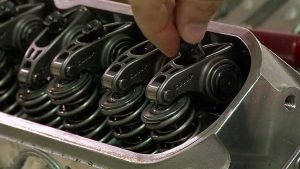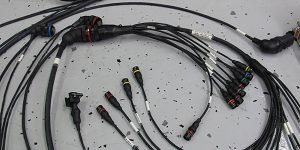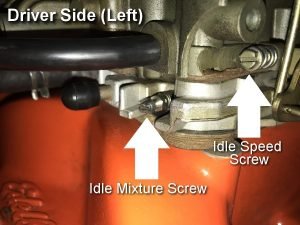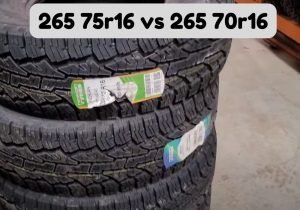When it comes to owning a car, it’s important to understand the concept of wear and tear. Wear and tear refers to the gradual deterioration that occurs over time as a result of regular use, exposure to the elements, and other factors. Understanding how to calculate wear and tear is essential for keeping your vehicle in good condition and avoiding costly repairs in the long run. In this blog post, we will explore the factors that contribute to wear and tear on a car, how to calculate it, and provide some tips for reducing it.
Contents
Factors that contribute to wear and tear
Several factors can contribute to the wear and tear of a car, including:
- Types of driving conditions: Driving in urban areas with heavy traffic and frequent stops can cause more wear and tear on a vehicle’s brakes, transmission, and suspension. On the other hand, highway driving typically puts less stress on these components.
- Frequency of use: The more you use your car, the more wear and tear it will experience. If you frequently drive long distances, your car will accumulate more mileage and wear than if you only use it for short trips.
- Maintenance practices: Regular maintenance and servicing can help reduce wear and tear on a car. Neglecting to change the oil, filters, or other critical components can cause unnecessary wear and tear and result in costly repairs.
- Age of the car: The older a car is, the more wear and tear it will have experienced. Over time, components such as the engine, transmission, and suspension will begin to wear out and require replacement.
- Type of vehicle: Different types of vehicles are designed for different purposes, and some may experience more wear and tear than others. For example, an SUV or pickup truck that is frequently used for off-road driving may experience more wear and tear on the suspension and tires than a sedan that is only driven on paved roads.
How to calculate wear and tear
Calculating wear and tear on a car involves inspecting several key areas of the vehicle and evaluating their condition. Here are the steps to follow:
- Assess the condition of the vehicle’s exterior: Check for scratches, dents, and other damage that can reduce the car’s value. Look for signs of rust, which can spread quickly and cause significant damage if left untreated.
- Check the tires for wear and tear: Inspect the tread for signs of uneven wear, which can indicate alignment or suspension problems. Bald tires can be dangerous and reduce traction, so it’s essential to replace them as soon as possible.
- Inspect the vehicle’s interior for damage: Look for signs of wear on the upholstery, carpet, and dashboard. Check the seats and seat belts for signs of damage, such as tears or fraying.
- Evaluate the engine’s performance: Listen for any unusual sounds when starting the engine or driving. Check the oil level and look for signs of leaks or other problems. Have a mechanic check the engine’s performance if you notice any issues.
- Determine the cost of repairs or replacements: Once you’ve identified areas of wear and tear, estimate the cost of repairing or replacing the damaged components. This will give you an idea of the car’s overall condition and value.
By following these steps, you can get a good idea of the level of wear and tear on your car and take steps to address any issues before they become more serious.
Tips for reducing wear and tear
Reducing wear and tear on your car can help extend its lifespan, reduce maintenance costs, and improve your overall driving experience. Here are some tips for reducing wear and tear on your vehicle:
- Regular maintenance and servicing: Follow the manufacturer’s recommended maintenance schedule and get your car serviced regularly. This can help identify and address issues before they become more serious and cause significant wear and tear on the vehicle.
- Safe and responsible driving habits: Avoid aggressive driving, harsh braking, and sudden acceleration, which can put undue stress on the vehicle’s components and cause more wear and tear. Drive defensively and follow traffic rules to avoid accidents and unnecessary wear and tear.
- Choosing the right type of vehicle for your needs: Consider your driving needs and choose a vehicle that is suitable for your lifestyle. If you frequently drive long distances or carry heavy loads, a vehicle with a larger engine and stronger suspension may be a better choice.
- Storing the car properly: If you’re not using your car for an extended period, store it properly to avoid damage from the elements. Keep the car covered and store it in a dry, temperature-controlled environment to reduce the risk of rust, corrosion, and other forms of damage.
By following these tips, you can reduce the amount of wear and tear on your car and keep it in good condition for years to come. Remember to take care of your vehicle, and it will take care of you.
FAQ:
Q: What is wear and tear on a car?
A: Wear and tear refers to the gradual deterioration that occurs over time as a result of regular use, exposure to the elements, and other factors.
Q: How can I calculate the wear and tear on my car?
A: Calculating wear and tear involves inspecting several key areas of the vehicle, including the exterior, tires, interior, and engine, and evaluating their condition. You can then estimate the cost of repairing or replacing any damaged components to determine the overall level of wear and tear on the car.
Q: What are some factors that contribute to wear and tear on a car?
A: Several factors can contribute to wear and tear on a car, including types of driving conditions, frequency of use, maintenance practices, age of the car, and type of vehicle.
Q: Can I reduce wear and tear on my car?
A: Yes, you can reduce wear and tear on your car by practicing safe and responsible driving habits, following the recommended maintenance schedule, choosing the right type of vehicle for your needs, and storing the car properly.
Q: How can reducing wear and tear benefit me?
A: Reducing wear and tear on your car can extend its lifespan, reduce maintenance costs, improve your overall driving experience, and help maintain its resale value.
Q: Should I consult a professional to calculate wear and tear on my car?
A: If you are unsure about how to evaluate the condition of your car, it may be helpful to consult a professional mechanic or appraiser to assist you in assessing the level of wear and tear on your car.
Conclusion
Understanding how to calculate wear and tear on a car is an essential aspect of car ownership. Factors such as driving conditions, frequency of use, maintenance practices, age of the car, and type of vehicle can all contribute to wear and tear. By regularly inspecting your car, assessing its condition, and following the recommended maintenance schedule, you can identify and address any issues before they cause significant damage. Additionally, practicing safe and responsible driving habits, choosing the right type of vehicle for your needs, and storing the car properly can all help reduce wear and tear and extend the lifespan of your car. By taking care of your vehicle, you can ensure that it remains in good condition and provides a reliable mode of transportation for years to come.
Affiliate Disclosure: As an Amazon Associate, I earn from qualifying purchases made through links on this site.









